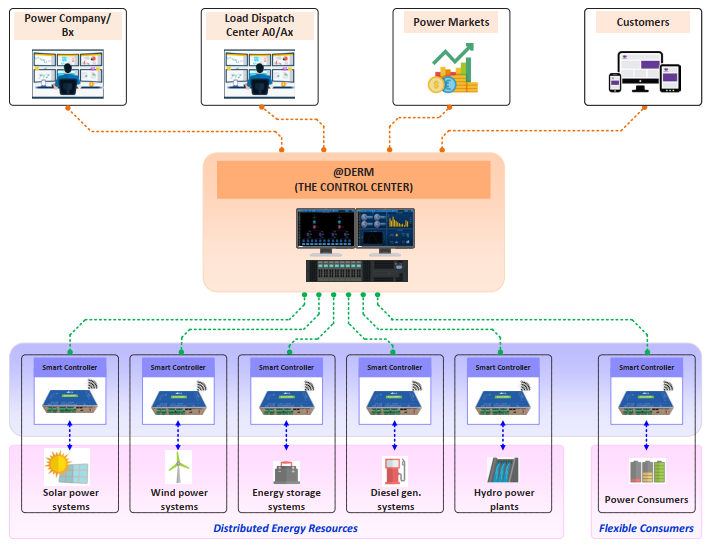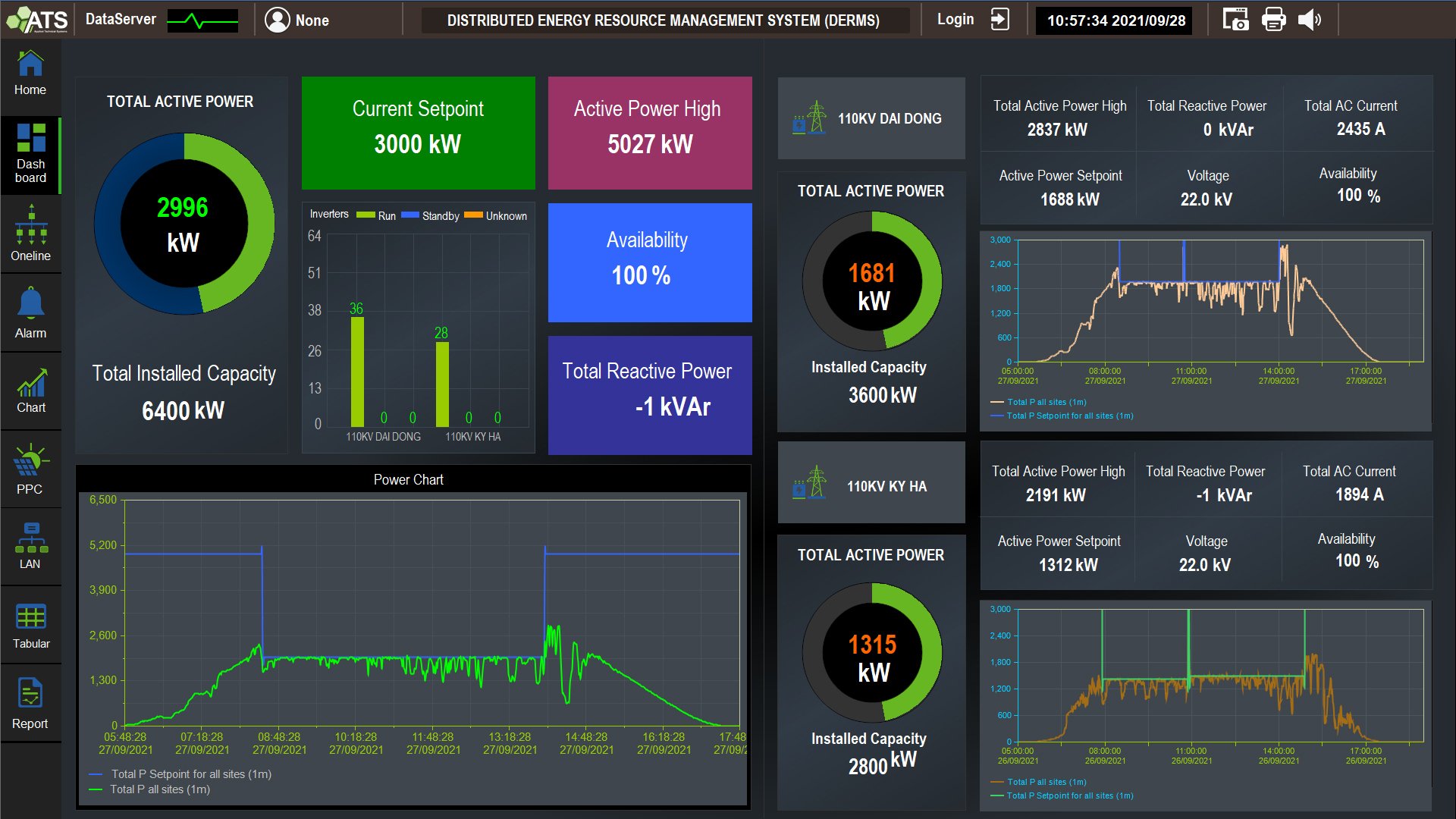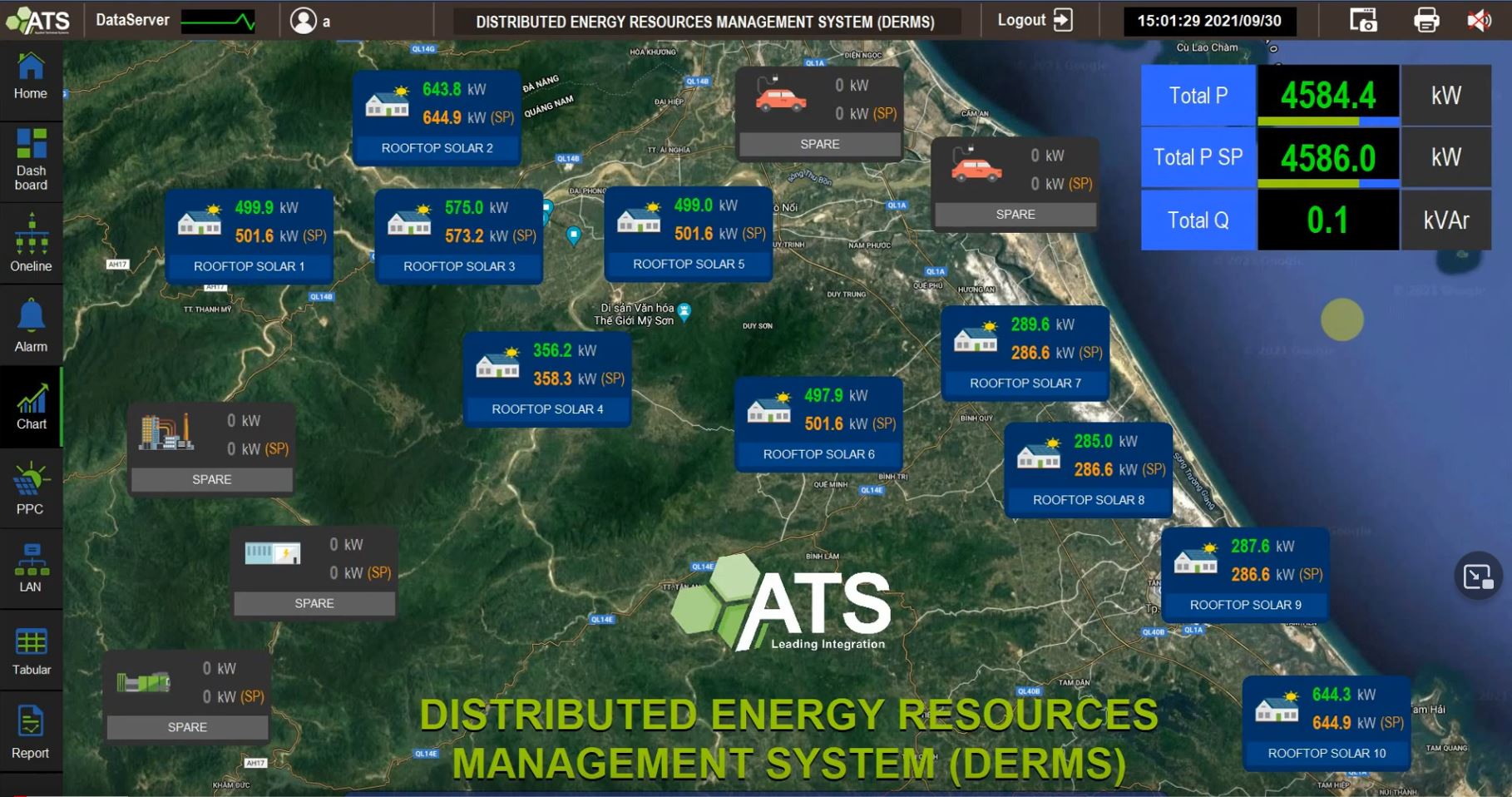
Features
- Provide tools for collection of important operation status data of renewable equipment, including system data, metered data, status of integrated control devices, alarming, etc., in real time and through standard interconnection protocol. In addition, these tools can share information with SCADA systems at dispatching centres and power companies, as well as can be used for making necessary control requests.
- Highly suitable for roof-top solar power management as well as for integrating other renewable energy sources such as wind turbines, small hydro power plants, etc.
- Manufacturer-independent, suitable for controlling power plans operating inverters, turbines, and other equipment from various vendors.
- Ready for future utility interface bus integration.
Functions
- Allow dispatching centres to fairly allocate generation output under conditions of system curtailment.
- Allow flexible operation of various DERs to avoid overloading while maintaining power quality for the local grids.
- Support various control methods: AGC control from SCADA/EMS, generation schedule control, manual parameter control, and distributed source redeployment to prevent overload on transformers and line feeders.
- Support various control functions: active power control, reactive power control, ramp rate control, power factor control, voltage control, plant startup/shutdown, grid support control (limit active power and power reserve, voltage profile monitoring and control, reactive power adjustment for grid voltage maintenance, grid frequency support, fault ride-through support, etc.).
- Provide the tool for optimum generation commitment in the market with transparency, safety and national energy security.
- Minimize generator shut-down/start-up frequency for units with high start-up cost and long start-up time (coal thermal, gas turbines), increase system reserves, avoid oil thermal unit commitment during peak load, and reduce overall system operation costs.
- Combining a large number of DERs improves the accuracy of power generation output forecasting.
- Multiple DERs, storage systems, and controllable loads can form a single, adjustable power unit known as a Virtual Power Plant (VPP), which matches the rated power and performance of a traditional power plant.
- Assist DERs in responding to price signals, accurately forecasting generation schedules, and minimizing the imbalance between generation capacity and load demand in the power system.

Flexible and Reliable Solution
Contact us to explore the possiblities
Let our expert team assist you in transforming your power infrastructure. The first step towards maximizing efficiency and reliability in the Australian power market.

